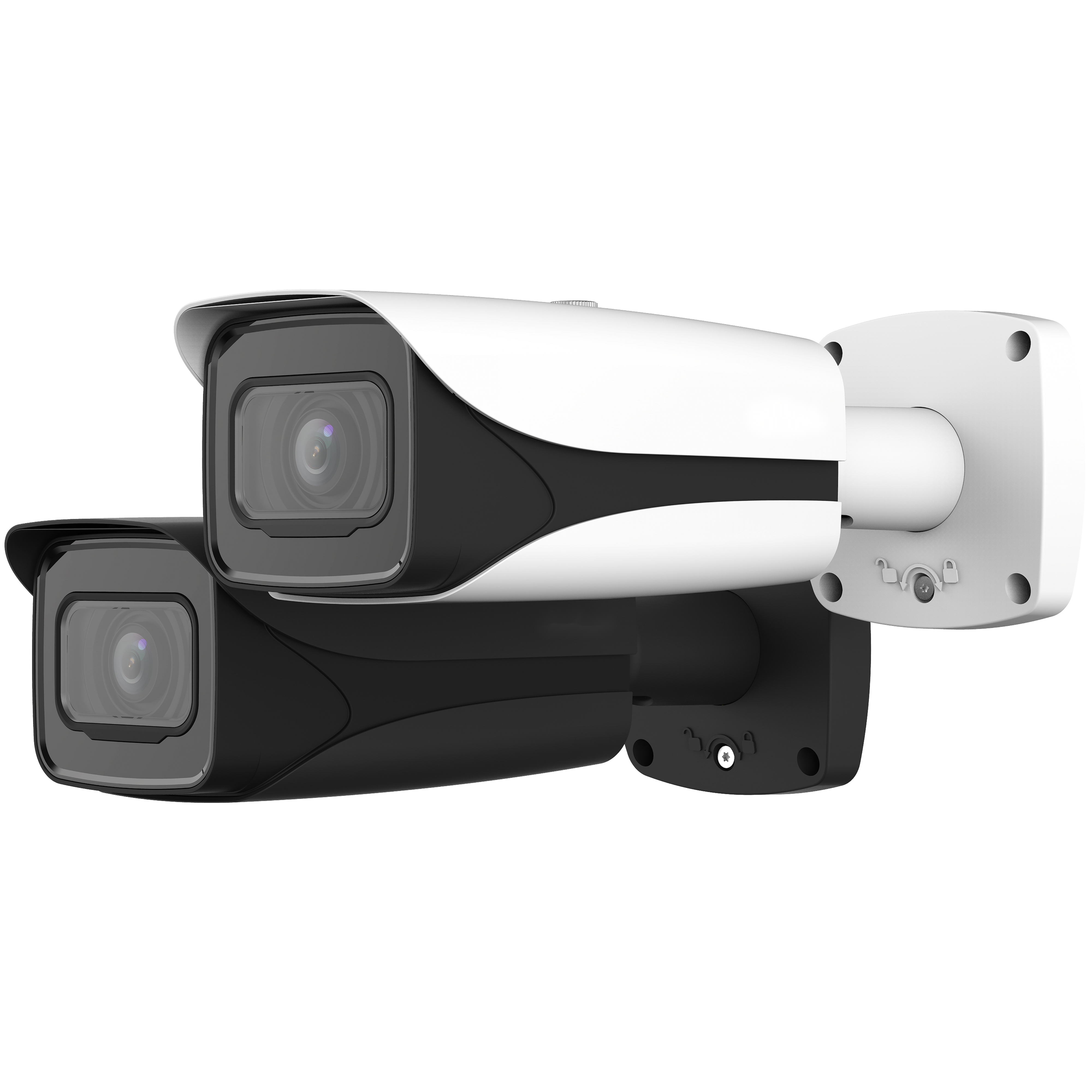Regarding camera selections, the distance to be covered from the camera to the object location is the most important factor and more important than MP.
You need to identify the areas you want to cover and pick a camera designed to cover that distance. In some instances, it may be a 2MP or 4MP that is the right camera and not an 8MP. DO NOT CHASE MP!!!
It is why we recommend to purchase one good varifocal and test it at all the proposed locations day and night to figure out the correct focal lengths and cams.
A few other tips....It is simple LOL do not chase MP - do not buy a 4MP camera that is anything smaller than a 1/1.8" sensor. Do not buy a 2MP camera that is anything smaller than a 1/2.8" sensor. Do not buy a 4K (8MP) camera on anything smaller than a 1/1.2" sensor.
Unfortunately, most 4k (8MP) cams are on the same sensor as a 2MP and thus the 2MP will kick its butt all night long as the 4k will need 4 times the light than the 2MP... 4k will do very poor at night unless you have stadium quality lighting (well a lot of lighting LOL).
Here are my general distance and camera recommendations, but switch out the Dahua 5442 series camera to the equivalent 2MP on the 1/2.8" sensor or equivalent Hikvision works as well. These particular cameras are generally accepted by many here as the best balance of performance day and night, price, and features. With all the cameras I have used and tested over the years, these are the ones I also currently use.
- 5442 fixed lens 2.8mm - anything within 10-15 feet of camera OR as an overview camera. This camera is still considered the "gold standard" and many will say 4MP on the 1/1.8" sensor is the sweet spot for surveillance cameras.
- 4K/X bullet or 4K/X turret - anything within 20 feet of the camera OR as an overview camera. The turret versions have a mic and the 4K/X bullet has two-way audio. These cameras need light and cannot see infrared. Keep in mind the larger sensor does mean the camera has a more shallow focus and has a definite sweet spot for focus and anything closer or further away will be a little soft. It is why most use it as an overview camera to capture color.
- Color4K-T180 - is a great overview camera and can see 180 degrees left-right, so one on the front of the house can see down the entire front (unless you have obstructions LOL). This camera needs light and cannot see infrared. Most would not use this as an IDENTIFY camera. This camera has two-way audio.
- T5449H-ASE-D2 2.8mm fixed lens - anything within 10 feet of camera where the object would be in a backlit condition at night (meaning the object is in between the camera and the light source which is common for a house with no lights but a streetlight - the person will be in the shadow of the streetlight from the camera's perspective). This camera has two-way audio.
- 5441F-AS-E2 (AKA Boobie cam) or E3241F-AS-M- great choice for a front door camera. The boobie cam can have one lens pointed down for packages. This camera has a mic.
- T5241H-AS-PV - Great little active deterrence camera with two way talk. Good for anything within 10 feet of camera or as an overview camera.
- 5442 ZE or 5842-ZE- varifocal up to 13mm- distances up to 40-50 feet (personally I wouldn't go past the 30 foot range but I like things closer). This camera has a mic.
- 5442 Z4E - varifocal up to 32mm - anything up to 80-100 feet (personally I wouldn't go past 60 feet but I like things closer).
- 5241-Z12E - varifocal up to 64mm - anything from 80 feet to almost 200 feet (personally I wouldn't go past 150 feet because I like things closer).
- 5241-Z12E - for a license plate cam that you would angle up the street to get plates up to about 175 feet away, or up to 220 with additional IR.
- PTZs - the 49425 is great sub $450 auto-track PTZ or the SD4A425DB-HNY mini-PTZ (sub $400) and in conjunction with an NVR or Blue Iris and the cameras above that you can use as spotter cams to point the PTZ to the correct location to compliment the fixed cams. If you have the budget though, the PTZ5A4M-25X is the best option unless you have an even bigger budget and could go with the PTZ4K45X-AI
- Indoors, the IP2M-841 is a cheap common camera choice. Works with Dahua NVR and Blue Iris. Has wifi and ability to use POE with this adapter. Has two-way talk and basic autotracking.
You need to get the correct camera for the area trying to be covered. A wide angle 2.8mm to IDENTIFY someone 40 feet away is the wrong camera regardless of how good the camera is. A 2.8mm camera to IDENTIFY someone within 10 feet is a good choice OR it is an overview camera to see something happened but not be able to identify who.
One camera cannot be the be all, see all. Each one is selected for covering a specific area. Most of us here have different brands and types, from fixed cams, to varifocals, to PTZs, each one selected for it's primary purpose and to utilize the strength of that particular camera.
So you will need to identify the distance the camera would be from the activities you want to
IDENTIFY on and purchase the correct camera for that distance as an
optical zoom.
If you want to see things far away, you need optical zoom, digital zoom only works in the movies and TV...And the optical zoom is done real time - for a varifocal it is a set it and forget it. You cannot go to recorded video and optically zoom in later, at that point it is digital zoom, and the sensors on these cameras are so small which is why digital zoom doesn't work very well after the fact.
Also, do not be sold by the terms FULL COLOR, COLORVU and the like. All cameras need light - either visible light or infrared. While the full color cameras are great, if you do not have ambient light or refuse to use the built-in white LED, then you are better off with a camera that can see infrared. Full Color cameras cannot see infrared, so you cannot add it later.
Many people have come here after buying a full color camera and expressing their disappointment in the picture quality of the camera because they were expecting magic. If you do not have ambient light outside or do not like the white LED lights on, you are better off with cameras that can see infrared as these type of cameras cannot see infrared, so you can't add infrared later.
Here is link to a thread of many that shows the disappointment of many thinking a ColorVu camera was magic and could defy physics. Full Color type cameras are great if you have light, but will be horrible if you do not have enough light.
What about adding some additional landscaping lighting - this cam is awesome and with minimal light will do great. External lightning will have new power cable and new installation, cost lot of time and extra money. Not everyone like light at night. So select a good cam is very important...

ipcamtalk.com
This image shows the importance of understanding focal length and its role in DORI (Detect, Observe, Recognize, Identify) and how one camera cannot do it all. If you want to IDENTIFY in the DOR part, then you need a camera with optical zoom to that location.
Now keep in mind DORI is based on manufacturer testing and is usually under perfect and ideal situations. Most of us here have seen you have to cut the DORI number in half during the day and cut that half in half at night for realistic distance approximations for a subject moving.
View attachment 130488
Here is a great thread putting together in chart form the appropriate sensor size for the MP you are looking at. If the MP/sensor combo is red, then it will perform poorly at night:
View attachment 145765
Everyone shops for a camera with a different approach to what might be the best camera for their install. I always check MP against sensor size as a way to remove undesirable cameras from my search. Once I found a camera with a desirable MP and sensor combo, I would then dig deeper on FOV...

ipcamtalk.com
We also have a couple of great threads put together by
@samplenhold about the importance of redundant cameras and considerations for plate reading LPR:
A lot of newbies ask for help with their camera setups and most think that they can get by with a single cam to cover quite a bit of area. While that is possible if all you are interested in is a wide-angle overview, it usually will not give you a great chance of getting a face shot good enough...

ipcamtalk.com
We were out of town and I was checking my cams remotely one morning and noticed one of the Deputies that regularly patrol my subdivision had been at my front door. She has come to me a few times requesting video as she knows I have fairly good coverage of the streets at my corner. I noticed that...

ipcamtalk.com





